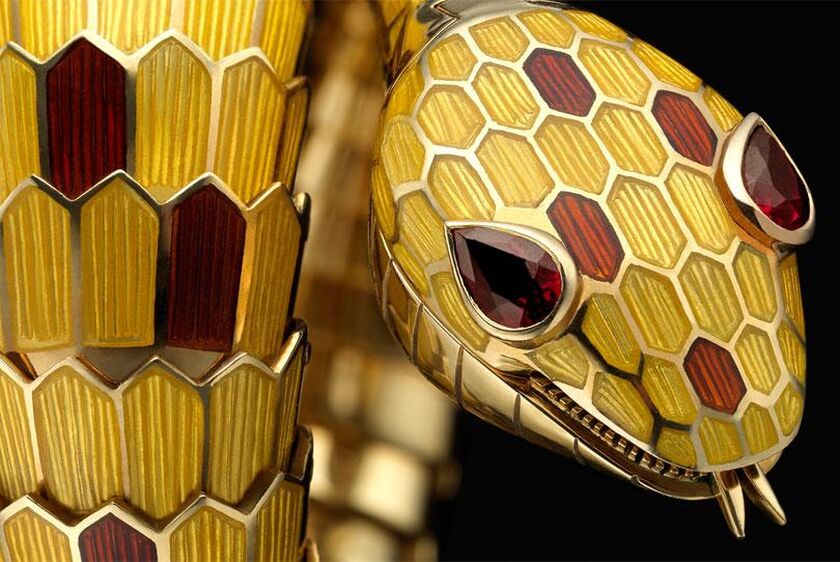 Editor’s note: The serpent is a central part of Bulgari’s iconography, and has been for the last eight decades since it first entwined women’s wrists in the 1940s. While the design has refined over years, shedding old aesthetics in favour of a newer expression of the same feminine elegance, its power as a symbol of Italian sophistication has never wavered. As a part of the “Watch & Act!” World Watch Auction that is currently offering an 18k yellow gold Serpenti Tubogas kindly donated by Bulgari, we wanted to take a look back at the history of the ophidian-inspired collection, which is an undisputed icon in the history of the Roman luxury house. For most of us today, snakes evoke a mixture of fascination and fear – but since ancient times they have been a mythological symbol for countless cultures and civilisations. Although, in the Christian tradition, a serpent represented the devil in the Garden of Eden, snakes mostly had positive associations. For Native Americans, Mayans and Aztecs, Persians, Chinese, Hindus, Africans and Australian First Nation tribes, they represented, variously, power, wisdom, eternity, fertility, sexual desire, protection, and a direct link to ancestral spirits. Unsurprisingly, then, since humans first adorned their…
Editor’s note: The serpent is a central part of Bulgari’s iconography, and has been for the last eight decades since it first entwined women’s wrists in the 1940s. While the design has refined over years, shedding old aesthetics in favour of a newer expression of the same feminine elegance, its power as a symbol of Italian sophistication has never wavered. As a part of the “Watch & Act!” World Watch Auction that is currently offering an 18k yellow gold Serpenti Tubogas kindly donated by Bulgari, we wanted to take a look back at the history of the ophidian-inspired collection, which is an undisputed icon in the history of the Roman luxury house. For most of us today, snakes evoke a mixture of fascination and fear – but since ancient times they have been a mythological symbol for countless cultures and civilisations. Although, in the Christian tradition, a serpent represented the devil in the Garden of Eden, snakes mostly had positive associations. For Native Americans, Mayans and Aztecs, Persians, Chinese, Hindus, Africans and Australian First Nation tribes, they represented, variously, power, wisdom, eternity, fertility, sexual desire, protection, and a direct link to ancestral spirits. Unsurprisingly, then, since humans first adorned their…
The post Why the serpent is so important to Bulgari appeared first on Time and Tide Watches.
Continue reading ‘Why the serpent is so important to Bulgari’